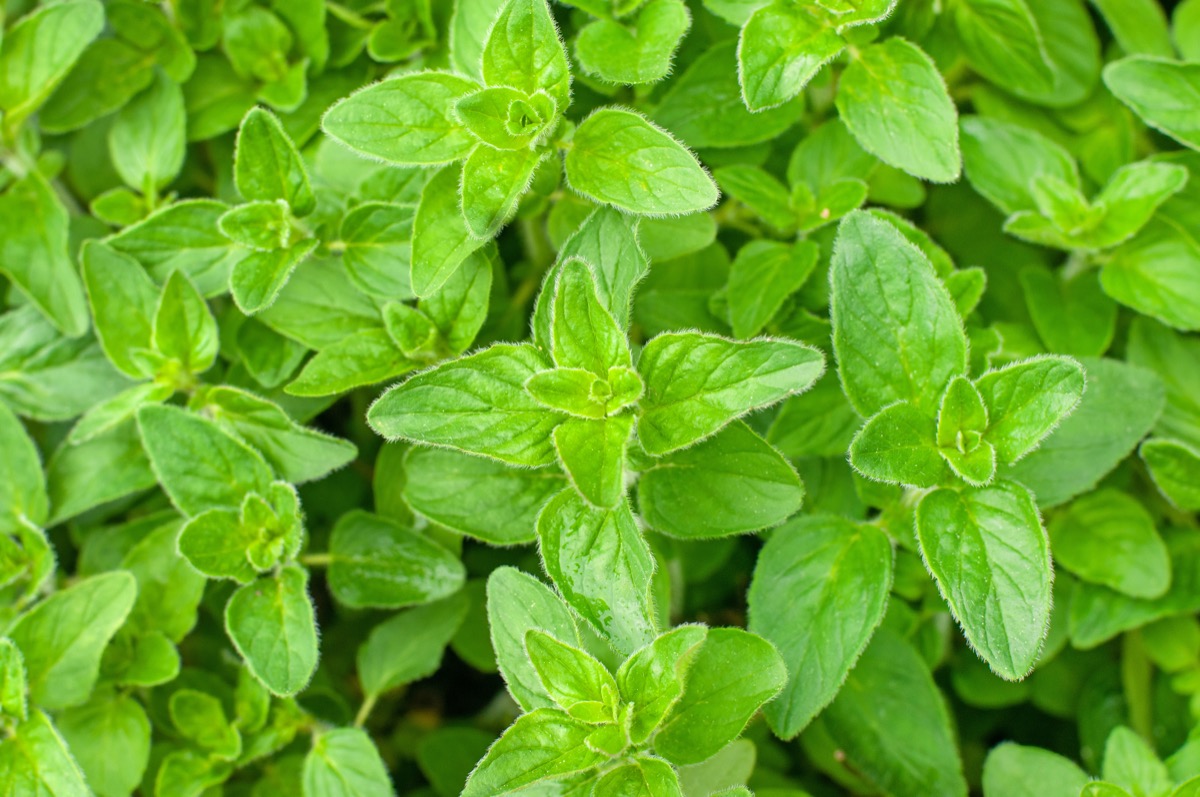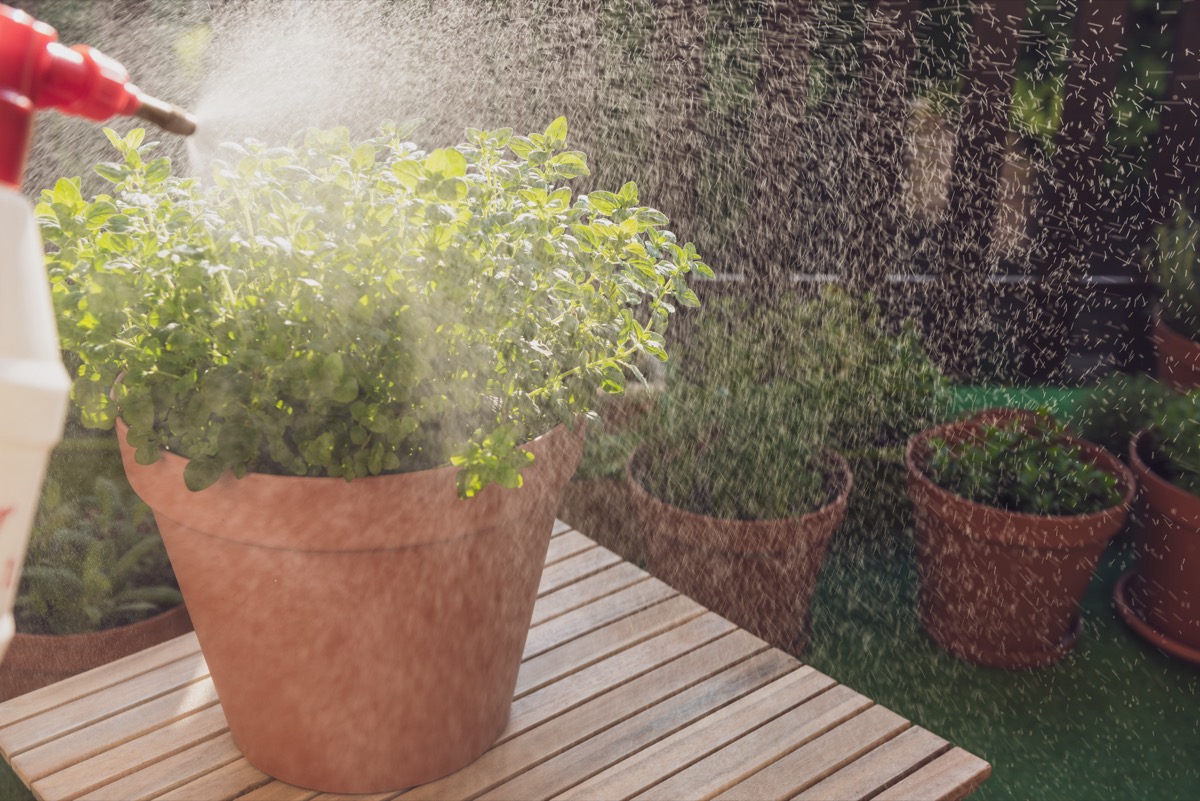Fertilizing potted rosemary plants is essential for their growth and overall health. With the right nutrients, these aromatic herbs can thrive and provide fresh, flavorful leaves all year round. Here, we will explore the different options for fertilizing your potted rosemary plants, including organic, natural, and homemade solutions. We will also discuss the importance of the NPK ratio and when and how to apply these fertilizers.

Organic Fertilizers for Oregano Plants in Pots: Nurturing Your Plants Naturally
Compost: Composting kitchen scraps, garden waste, and dried leaves can create nutrient-rich compost that can be used as an organic fertilizer for potted rosemary plants. Apply a layer of compost around the plant’s base, careful not to cover the stems or foliage.
Worm Castings: Vermicompost, also known as worm castings, is an excellent organic option that provides a balanced mix of nutrients for your rosemary plants. Mix worm castings with soil or sprinkle them on top of the potting mix to provide a slow-release source of nutrition.
Manure Tea: Create a nutrient-rich liquid fertilizer by steeping well-aged manure in water. Dilute the manure tea with water to water your potted rosemary plants. This homemade fertilizer is gentle yet effective in providing essential nutrients.
Natural Fertilizers for Oregano Plants in Pots: for Environmentally-friendly Options
Fish Emulsion: Fish emulsion is a popular organic fertilizer derived from fish waste. It is rich in N, P, and K, essential for plant growth. Dilute fish emulsion according to the manufacturer’s instructions and apply it to your rosemary plants every few weeks during the growing season.
Seaweed Extract: Seaweed extract is a natural organic fertilizer that contains various nutrients, trace elements, and growth-promoting hormones. It enhances the plant’s ability to absorb nutrients and improves overall plant health. Dilute seaweed extract with water and then apply it to the soil or foliage of your potted rosemary plants.
Homemade Fertilizers for Oregano Plants in Pots: DIY Solutions for Optimal Plant Health
Banana Peel Fertilizer: These are rich in potassium, an essential nutrient for plant growth. To make a banana peel fertilizer, chop up and bury them in the soil around the base of your oregano plants. As the peels decompose, they release potassium into the soil, promoting healthy growth.
Coffee Grounds: These can be an excellent nitrogen source, vital for leafy green growth. After brewing your morning coffee, sprinkle the coffee grounds around the base of your oregano plants. However, it’s important to note that coffee grounds can be acidic, so use them sparingly and monitor the soil pH to prevent acidity buildup.
NPK Ratios and Their Importance in Selecting Fertilizers for Oregano Plants in Pots
The specific NPK ratio required for oregano herb in pots may vary depending on various factors such as soil quality, climate, and growth stage. However, a general guideline for oregano is a balanced NPK ratio like 10-10-10 or 20-20-20. These ratios provide a well-rounded nutrient supply for overall plant growth and development.
In case you missed it: How to Grow and Care for Organic Oregano: Guide for Planting to Harvesting

When selecting a fertilizer for an oregano herb, it is essential to consider the plant’s specific nutrient needs at different growth stages. During the initial growth phase, a fertilizer with a higher nitrogen (N) content, such as a ratio of 20-10-10, can promote vigorous leaf and stem development. As the plant begins to flower, a fertilizer with a higher phosphorus, such as a ratio of 10-20-10, can support robust root growth and bloom.
Slow-release Fertilizers: Enhancing Nutrient Availability for Oregano Plants in Pots
Oregano plants require a balanced supply of essential nutrients to support their growth and productivity. Slow-release fertilizers contain a blend of macronutrients, including nitrogen, phosphorus, and potassium, and micronutrients like iron (Fe), manganese (Mn), and zinc (Zn). These nutrients are essential for oregano plants’ overall health, root development, flowering, and flavor enhancement.
Slow-release fertilizers ensure that nutrient uptake is optimized, as they gradually release the nutrients in response to environmental factors like temperature, soil moisture, and microbial activity. This controlled release minimizes nutrient leaching and wastage, making them an effective and efficient choice for potted oregano plants.
pH Levels and Fertilizer Selection for Oregano Plants in Pots: For Balanced Soil Environment
Maintaining proper pH levels and selecting the right fertilizer for oregano plants in pots is crucial for creating a balanced soil environment. Oregano plants thrive in slightly acidic to neutral soil, with a pH level range of 6.0 to 7.0. Regularly test the soil pH using a pH testing kit. To adjust the pH level, acidic soil can be neutralized by adding lime, while alkaline soil can be amended with sulfur or peat moss.
Achieving the ideal pH range ensures optimal nutrient availability for the oregano plants, promoting healthy growth and development. When selecting fertilizers for oregano plants, it is advisable to use a balanced, slow-release fertilizer with equal nitrogen, phosphorus, and potassium (NPK) ratios. Also, incorporating organic matter, such as compost or well-rotted manure, into the potting mix provides a steady supply of nutrients.
The Importance of Timing: When to Apply Fertilizer to Oregano Plants in Pots
The best time to apply fertilizer to oregano plants in pots is typically during the growing season. Oregano is a warm-season herb that thrives in well-draining soil with plenty of sunlight. The growing season typically begins in spring and extends through summer and early fall. Applying a slow-release or granular fertilizer at the start of the growing season is recommended. This type of fertilizer releases nutrients over an extended period, providing a steady supply of nourishment to the oregano plants.
In case you missed it: How to Grow Oregano from Cuttings: Planting Guide for Beginners

Slow-release fertilizers are particularly beneficial for potted plants as they prevent nutrient runoff and reduce the risk of over-fertilization. Additionally, it is crucial to monitor the growth of your oregano plants throughout the season. If the plants show signs of slow growth or nutrient deficiency, it may be necessary to apply a liquid fertilizer to provide a quick boost of nutrients. Liquid fertilizers are water-soluble and can be easily absorbed by the plant’s roots, providing rapid nutrient uptake.
How to Apply Fertilizer to Oregano Plants in Pots: Techniques for Maximum Effectiveness
Firstly, always follow the instructions provided on the fertilizer packaging. Different fertilizers have varying concentrations and application rates, so reading and adhering to the manufacturer’s guidelines is essential. Before applying the fertilizer, ensure the potting soil is moist but not soggy. Watering the potting soil before fertilizing helps prevent the fertilizer from burning the plant’s roots and encourages better nutrient absorption.
To apply granular or slow-release fertilizer, sprinkle it evenly around the base of the oregano plant, avoiding direct contact with the foliage. Use a hand trowel or a small gardening tool to lightly work the fertilizer into the top inch of the soil. This helps incorporate the nutrients into the root zone and prevents them from being washed away during watering.
Water-soluble Fertilizers for Potted Oregano Plants
When selecting a water-soluble fertilizer for your oregano plants, look for a balanced formula that contains essential nutrients like nitrogen (N), phosphorus (P), and potassium (K). Nitrogen promotes lush foliage growth, phosphorus encourages root development, and potassium enhances plant health and disease resistance. To apply water-soluble fertilizer, dilute it according to the instructions on the packaging. Use a watering can or a garden sprayer to apply the solution evenly to the soil around the oregano plant. Avoid wetting the foliage excessively, leading to leaf burn or fungal diseases.
In case you missed it: When to Plant Vegetables in Ohio: Growing Calendar for Northern and Southern Regions

Table for Fertilizing Potted Oregano Plants: Organic, Natural, Homemade, NPK Ratio And When to Apply
| Type of Fertilizer | Fertilizer | When to Apply |
| Organic | Compost, Worm casting, Manure Tea | Spring and Fall |
| Natural | Fish Emulsion, Seaweed Extract | As side dressing |
| Homemade | Banana Peels, Coffee grounds | As side dressing |
| NPK ratio | 20-10-10 | Three splits/ season |
| Water soluble | Compost Tea | During growing season |
| Slow release | As spikes available in the market | During growing season |
Conclusion
Fertilizing potted oregano plants is crucial for their optimal growth and productivity. By opting for organic and natural fertilizers, exploring homemade alternatives, understanding the importance of NPK ratio, and following the correct application methods, you can ensure that your oregano plants thrive and provide you with a harvest of fresh and flavorful leaves.
- Feed Your Flock for Less: Top 10 Tips to Save on Chicken Feed
- Ultimate Guide to Ossabaw Island Hog: Breeding, Raising, Diet, and Care
- Hatching Answers: The Top 10 Reasons Your Chickens Aren’t Laying Eggs
- Eggs and Economics: Breaking Down the Cost of Raising Backyard Chickens
- Defend Your Greens: Proven Methods to Keep Iguanas Out of Your Garden
- Ultimate Guide to Cinnamon Queen Chicken: A Comprehensive Guide for Beginners
- Ultimate Guide to California Tan Chicken: Breeding, Raising, Diet, Egg-Production and Care
- Ultimate Guide to Marsh Daisy Chicken: Breeding, Raising, Diet, and Care
- 10 Types of Chicken Farming Businesses You Can Start for Profits